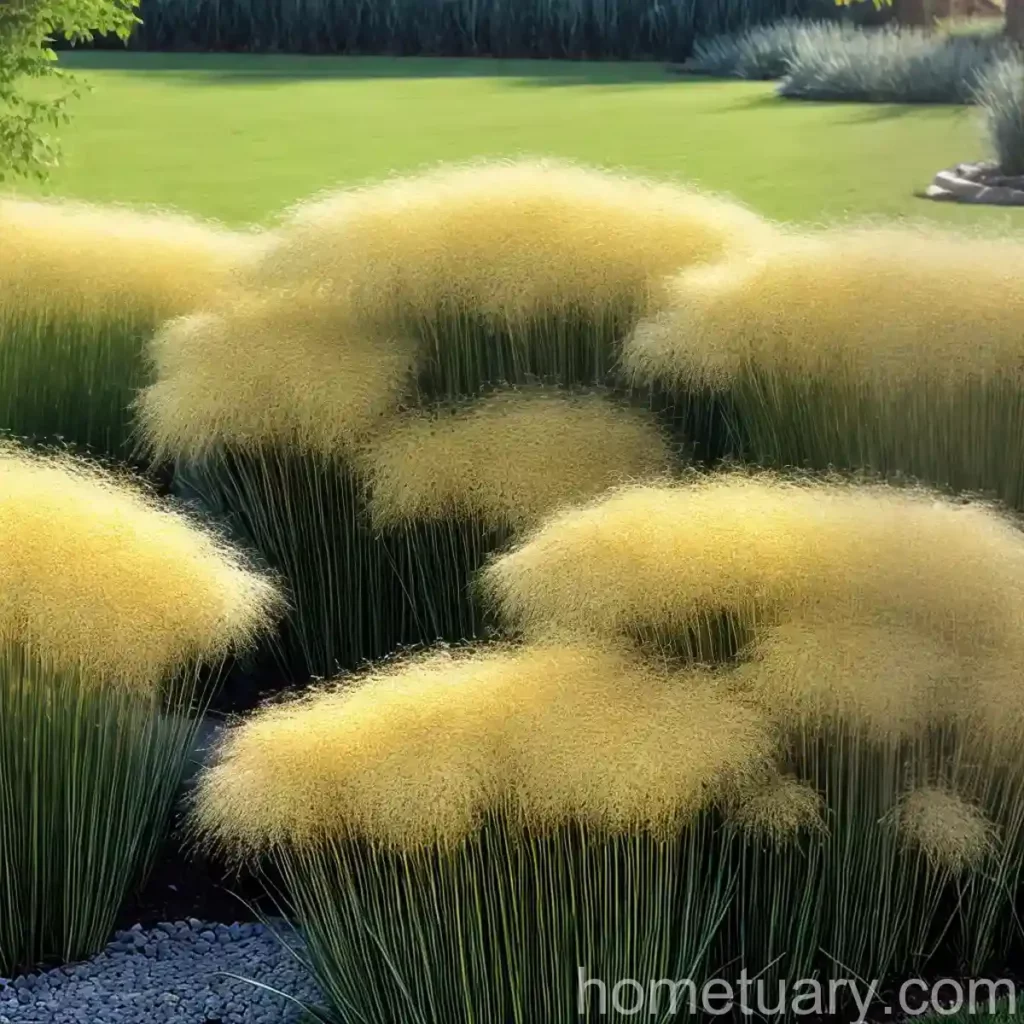The Beauty of Switch Grass (Panicum virgatum ‘Shenandoah’)
What is switchgrass (Panicum virgatum ‘Shenandoah’)?
Switchgrass (Panicum virgatum ‘Shenandoah’) is a versatile and attractive ornamental grass that is highly valued for its stunning colors, low maintenance requirements, and adaptability to a wide range of soils. This warm-season perennial grass belongs to the Poaceae family and is native to North America. It is known for its fine and delicate foliage, which produces a cascading effect when grown in a mass planting while also standing out as a focal point in a garden bed. The ‘Shenandoah’ variety, in particular, is celebrated for its vibrant, wine-red foliage that intensifies as the summer progresses, adding visual interest to landscapes.
Switchgrass is an excellent choice for landscaping and garden design, providing year-round interest and a host of practical uses, such as erosion control and wildlife habitat creation. With its stunning visual appeal, ease of maintenance, and adaptability, switchgrass has become a popular choice among homeowners, landscapers, and gardeners. In this comprehensive guide, we will explore the key aspects of growing and caring for switchgrass (Panicum virgatum ‘Shenandoah’), including its cultural requirements, uses, propagation methods, disease and pest management, and other essential care tips.
Key Takeaways – switch grass (Panicum virgatum ‘Shenandoah’)
Before delving into the specifics of establishing and maintaining switchgrass (Panicum virgatum ‘Shenandoah’), let’s highlight the key takeaways about this remarkable ornamental grass:
Culture
- Switchgrass (Panicum virgatum ‘Shenandoah’) is a warm-season perennial grass with a clumping growth habit, reaching heights of 3-5 feet and spreading 18-24 inches wide.
- It thrives in USDA hardiness zones 5-9, making it suitable for a wide range of climates.
- ‘Shenandoah’ switchgrass boasts striking wine-red foliage that intensifies in color as the summer progresses, adding visual appeal to gardens and landscaping projects.
Uses
- This ornamental grass is a versatile landscaping element, suitable for mass plantings, mixed borders, and containers.
- Its fine, delicate foliage and upright form make it an excellent choice as a focal point in garden beds and landscapes.
Water
- Once established, switchgrass is relatively drought-tolerant and requires minimal water, making it an ideal choice for low-maintenance landscapes.
Sunlight
- Switchgrass thrives in full sun but can tolerate partial shade, although its foliage color may not be as vibrant in shadier conditions.
Fertilizer
- This grass has modest fertilizer needs and can thrive in moderately fertile soils.
Soil
- It is adaptable to a wide range of soil types, including clay, loam, and sandy soils, as long as they are well-draining.
Pruning
- Minimal pruning is required for switchgrass; removing dead foliage in the spring promotes new growth.
Propagation
- Propagation is commonly done through division of the clumps in spring or early fall.
Container Popularity
- ‘Shenandoah’ switchgrass is also suitable for container gardening, providing a striking focal point on patios and other outdoor spaces.
Common Diseases
- Despite being relatively low-maintenance, switchgrass is susceptible to certain diseases, including rust and leaf spot, which can be managed with proper care and maintenance practices.
Disease Diagnosis
- Regular inspections of the foliage and monitoring for signs of disease are essential for early diagnosis and targeted treatment.
Common Pests
- Switchgrass is generally resistant to pests but may occasionally experience issues with aphids and leafhoppers.
Botanist’s Tips
- Plant switchgrass (Panicum virgatum ‘Shenandoah’) in well-draining soil and provide adequate sunlight to promote healthy growth and vibrant foliage color.
Fun Facts
- ‘Shenandoah’ switchgrass is named after the picturesque Shenandoah Valley in Virginia, evoking images of its stunning autumn landscapes.
Links to External Resources
- To further explore the cultivation and care of switchgrass (Panicum virgatum ‘Shenandoah’), you may find the following external resources helpful: The American Society of Landscape Architects.
Now that we have outlined the key takeaways, let’s delve into the specifics of growing and caring for switchgrass (Panicum virgatum ‘Shenandoah’) to create stunning landscapes and garden spaces.
Culture of Switchgrass (Panicum virgatum ‘Shenandoah’)
Switchgrass (Panicum virgatum ‘Shenandoah’) is a warm-season perennial grass that is characterized by its clumping growth habit, reaching heights of 3-5 feet and spreading 18-24 inches wide. With its fine and delicate foliage, switchgrass is an excellent choice for creating a mass planting effect in the landscape, whilst also serving as an eye-catching focal point in garden beds and borders. Its elegant form and striking wine-red foliage make it an appealing addition to landscaping projects.
Uses
Switchgrass (Panicum virgatum ‘Shenandoah’) offers a range of uses in landscaping and garden design:
-
Mass Plantings: The cascading effect of switchgrass foliage makes it a captivating choice for mass plantings, creating a soft and natural-looking landscape.
-
Focal Point: Its upright form and vibrant foliage make switchgrass an excellent choice as a focal point in garden beds and landscapes, especially when its wine-red color intensifies in the summer.
-
Mixed Borders: Switchgrass can be incorporated into mixed borders to add texture, movement, and color contrast among other plants.
-
Containers: ‘Shenandoah’ switchgrass thrives in containers, providing a striking visual element on patios, balconies, and other outdoor spaces.
Water
Once established, switchgrass (Panicum virgatum ‘Shenandoah’) is relatively drought-tolerant and requires minimal watering. This makes it an ideal choice for low-maintenance landscapes, especially in regions with hot and dry summers.















